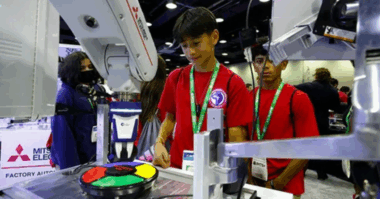On rotating machinery, runout is defined as the degree to which a shaft or coupling deviates from true circular rotation. Every shaft or coupling has a center or rotation, or centerline. Any stray from concentricity is considered runout. If runout is severe, it can cause many problems with equipment, such as:
- Excessive vibration.
- Seal wear.
- Bearing damage.
Runout can be easily overlooked during the alignment process, regardless of the tool being used to measure for misalignment. But it is easy to check for runout before the alignment process begins.
Use a dial indicator and magnetic base. Zero the indicator on the outside diameter of the coupling hub. Slowly rotate the shaft to look for runout, and measure the amount. Then move the indicator to the shaft adjoining the coupling hub. Measure the same way. If the hub and shaft travel by approximately the same amount, the runout is probably due to a bent shaft. To confirm, measure the shaft in different places. The bend normally decreases the closer the indicator is moved toward the bearing. In this case, if the runout is excessive, the shaft should be replaced.
If runout is measured on the coupling hub, but not the shaft, the runout is probably due to either a casting or machining error (such as the hub being bored out of center). In this case, the coupling hub should be replaced, but the shaft should be OK.
In addition, axial runout of coupling hubs should be checked as well. This can often indicate either a damaged hub, or one that was not bored concentrically, but at an angle.
Most engineering manuals recommend no more than 2-3 mils of runout. On machines rotating at 3600 rpm or faster, this number should be cut in half (1 to 1 1/2 mils).
A quick check for runout can identify machinery problems, increase reliability, and extend component life.
For more information, visit VibrAlign.com.




